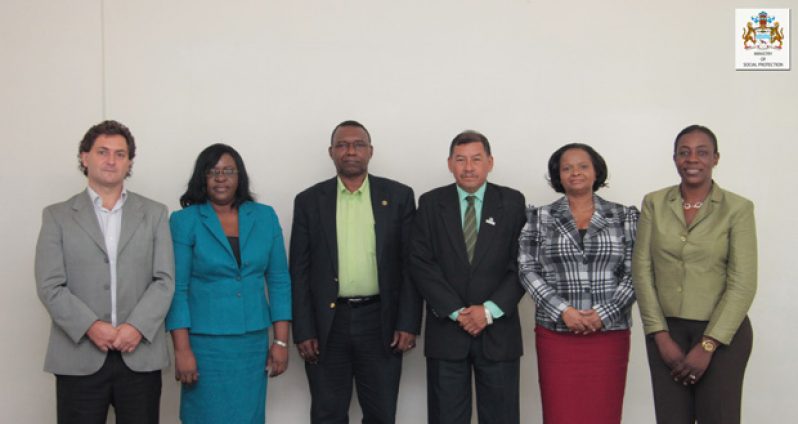THE Guyana Government and the Food and Agriculture Organisation (FAO) have joined forces to help reduce poverty here pegged at 36 per cent and representing some 274,000 Guyanese.The strategy unveiled last Friday morning at the Pegasus Hotel in Georgetown under the theme, ‘Governance for Food and Nutrition Security in Guyana,’ will focus heavily on hinterland communities which Minister of Social Protection Ms Volda Lawrence said historically “have been short-changed.”
In a release, Minister Lawrence is quoted as announcing that the government will shortly roll out new programmes to train hinterland residents as social work specialists, who will be the administration’s “point persons to take the [public] assistance to the hinterland residents” as part of her government’s strategy to beat the poverty pinch.
She said her ministry will shift the focus of assistance “from individuals to families.” The move means that children of beneficiary families must be enrolled and attending school and also must be fully immunised, the minister said pointing to some details of the plan which is expected to be enhanced from 2016.
“This is a larger package [and] we are on track to give the family a rounded support to break the cycle of poverty in Guyana, [because] the joint GOG/FAO initiative is an excellent programme to remove people from poverty,” Lawrence said. FAO Representative in Guyana Mr Reuben Robertson endorsed Lawrence’s plan, dubbing it “a road map” for the future which can be emulated in the rest of the hemisphere continually strangled by poverty and now poor dietary habits.
“We are eating ourselves to death,” Jorge O’Ryan warned. O’Ryan, who is the FAO Governance Officer for the Caribbean, is concerned that processed foods have become part of “the natural diet of Guyanese and this is worrying.” He wants a shift in local taste and called for the eating of more fruits and vegetables here. The FAO official said that although undernourishment among Guyanese has fallen from 9.2 to 5 percent the persistence “needs to be addressed.”
He said alongside a dip in nutritional intake in Latin America and the Caribbean is an “amazing level of poverty,” which persists in the hemisphere. This, O’Ryan said, is worsened by the scale of annual natural disasters experienced by several countries. Of concern too to him is the steep climb predicted for the Region’s food import bill for the next 15 years, although Guyana is still viewed as the potential bread basket. Currently, the Region buys some $US5B in food from non-Caribbean countries and this figure is expected to soar to $US22B by 2030.
The bourgeoning of the food-import bill has been attributed to skewed income distribution, not surprisingly favouring the well-off. “Our Region has one of the most unequal distributions of income: for several countries the richest 10 per cent of the population consumes 10 times more than the poorest 10 per cent,” O’Ryan said.
He challenged regional authorities to be good stewards of the territory’s food security programme, paying attention to its four pillars: food availability, food access, nutritional adequacy and stability.
Under the first pillar, security strategies must be coordinated “through the development and management of national and regional public policies to meet the challenges of food security with a gender perspective and incorporating a human rights approach, in particular the Human Right to Food. Pillar two calls for a “timely and sustainable access to safe, adequate, sufficient, nutritious and culturally relevant food for all people, especially the most vulnerable, in order to develop and fully maintain their physical and mental faculties.” According to the third pillar, the diversity of eating habits must be respected, assuring there is “nutritional well-being and assurance of nutrients for all vulnerable groups.” The final pillar points to stable production and timely attention to socio-natural disasters likely to affect food availability.
Guyana, FAO in pact to help fight poverty

SHARE THIS ARTICLE :
Facebook
Twitter
WhatsApp




.png)








